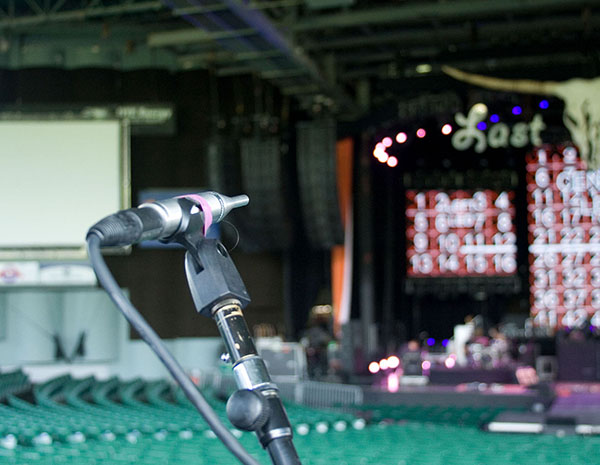
Final Communication
I went through the stage plot and input list one final time and made final corrections before sending them to everyone involved the next morning. A quick note – the final change had nothing to do with audio, but with the visual impact of placing band members on the stage, specifically, creating a balanced look with their placement. Now it was time to do my final technical preparations.
Pre-Show Prep
I checked to make sure that I had access to all data about the house system so I could have a reference on show day if needed (here I was focused on coverage angles, SPL data and frequency response charts), along with creating a session file for the digital mixer I’d be using.
When creating a session file for a band I haven’t worked with before, I include only routing and organizational aspects that allow me to move quickly and efficiently through sound check. This means naming and labeling all inputs and outputs, creating matrices and groups, assigning effects, creating proper routing paths, setting up preferences for console behavior, and assigning DCA faders.
On inputs, I engage all EQs, and then engage high-pass filters on the channels that need them and set them to a uniform frequency of 100 Hz. On the dynamics side, I set the make-up gain on compressors for channels that I’ll be treating dynamically (usually 3 dB of make-up gain, because I initially shoot for 3 dB of gain reduction as my compression starting point). I save the session to two separate USB drives and also have the file ready on my computer.
I also created a session for multitrack recording and then packed all my gear, double checking that the package included everything needed. Since I have a system for placing items in their own compartments in a suitcase and a backpack, I can quickly determine if something is missing, but it never hurts to double check anyway.
The last thing to do was to check the weather forecast since the venue was a covered open-air theatre, meaning we would be subjected to outdoor temperature and humidity variations. The forecast suggested heavy rain and quite cold weather, which also meant I had to adjust my wardrobe choices. Quick tip: layers are lifesavers!

Show Day
My final check focused on logistics. I scanned the traffic report for possible delays on my route, and checked that there were enough power bars in my bag (make sure to bring something to eat in case solving potential problems cuts into meal time, plus they make a great gift for fellow crew members if you want to express your gratitude for a job well done). And off I went.
The documentation I provided earlier meant that the band techs could prep the stage with minimal need for additional questions, which allowed me to do PA system verification and alignment without much disturbance. We got to run a full line check and perform a basic monitor ring out before the act got on stage, which meant that our schedule worked out as planned. It didn’t hurt that we all got there a half hour before the agreed upon time, always a good strategy if feasible.
All of this prep resulted in a great show. It wasn’t without difficulties, because we were battling heavy rain during load in and setup, low temperatures, and a guitar amp that decided that ground hum noise should be an integral part of its sound for this show, but the artist and the band were satisfied and that’s the ultimate goal.
One last tip: Above all else, don’t forget to bring a smile and loads of good energy to a gig. I’ve found them to be the most useful tools of all.
